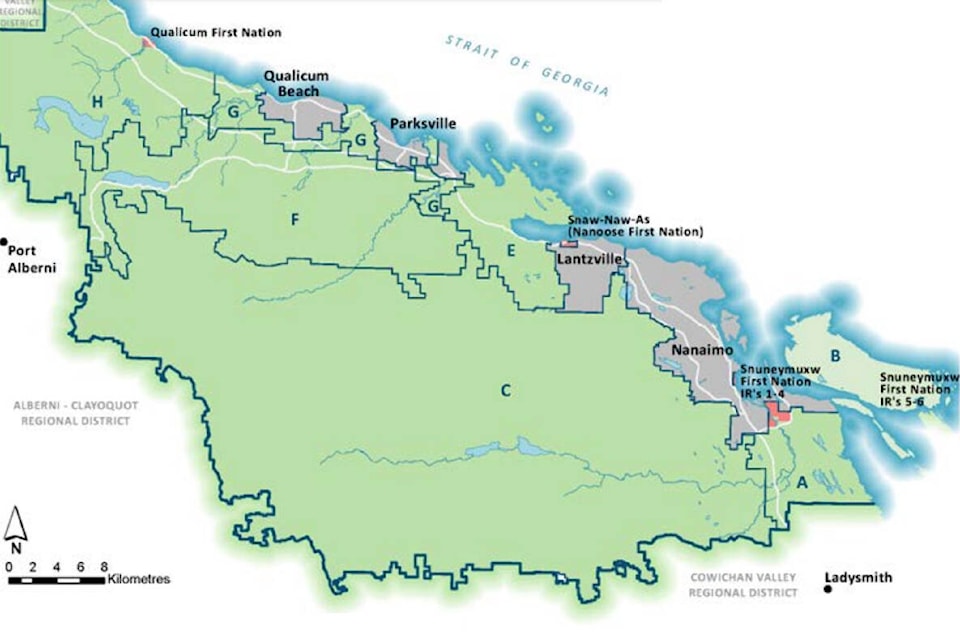A new regional growth strategy is acceptable to the RDN’s municipalities and will go to the board this spring for next steps.
The Regional District of Nanaimo’s regional growth strategy received first and second readings in December, and in February and March there was a referral period engaging the City of Nanaimo, the District of Lantzville, the City of Parksville and the Town of Qualicum Beach.
The growth strategy review has been happening for two years, and the process will end with a bylaw that will set out regional visions and measurable goals. A City of Nanaimo staff report in March described the regional growth strategy as a long-term plan for the region that co-ordinates efforts to address regional land-use challenges.
“The purpose of a regional growth strategy is to achieve sustainable growth, and that’s to be done working together in collaboration with our member municipalities and our electoral areas where we look to address issues that cross local government boundaries such as housing, the environment, climate change, the local economy and more,” said Jamai Schile, RDN senior planner, when she presented to Lantzville council in February.
The RDN board, early in the regional growth strategy review process, determined that it did not wish for any changes to land-use designations or growth containment boundaries, she said, so the scope of the review instead focused on climate change adaptation and mitigation, housing, transit and mobility, sustainable rural development, updated demographic information, and performance measures.
The RDN’s draft regional growth strategy points to “major changes” to a number of goals and policies. In its climate action goal-setting, policies are being updated to include low-carbon emitting options, natural assets, natural hazard management and advocacy, and performance indicators are being updated to match. As well, most land-use and mobility policies are being updated to provide additional strategies to promote and support transit and mobility options. As far as housing, diversity of housing types is being stressed as a notable change to the growth strategy’s goals.
Some of the growth strategy’s more specific new or updated goals include reducing greenhouse gas emissions to prescribed levels, increasing the number of step code-related building permits, decreasing per capita water consumption, increasing the percentage of dwellings inside growth containment boundaries, increasing the percentage of agricultural land being actively farmed, decreasing or stabilizing housing costs relative to inflation and incomes, decreasing wait lists for social housing, and stabilizing per capita costs of providing wastewater treatment.
Kim Fowler, the RDN’s manager of long-range planning, said in an e-mail that the bylaw’s 60-day statutory referral period has ended with either support or no objection from the four member municipal councils, so RDN staff now anticipates bringing forward a staff report in late April or early May. At that time, the board will consider third reading and potentially adoption.
READ ALSO: Parksville council votes to accept RDN’s updated regional growth strategy
